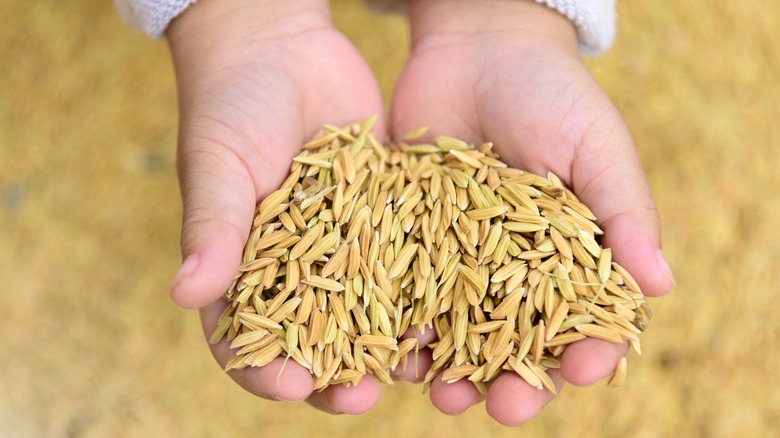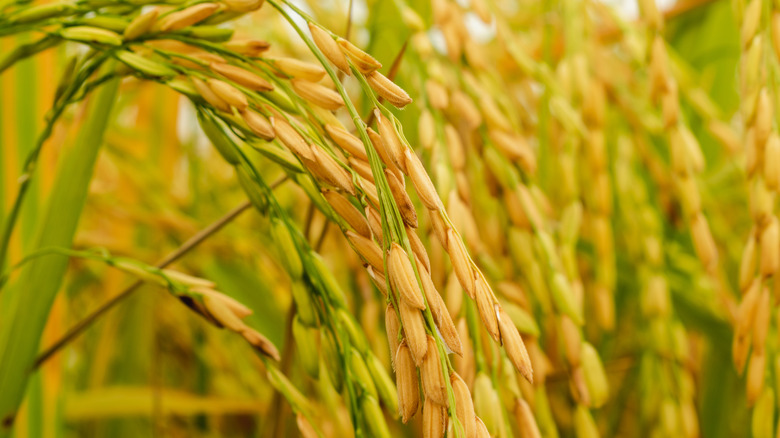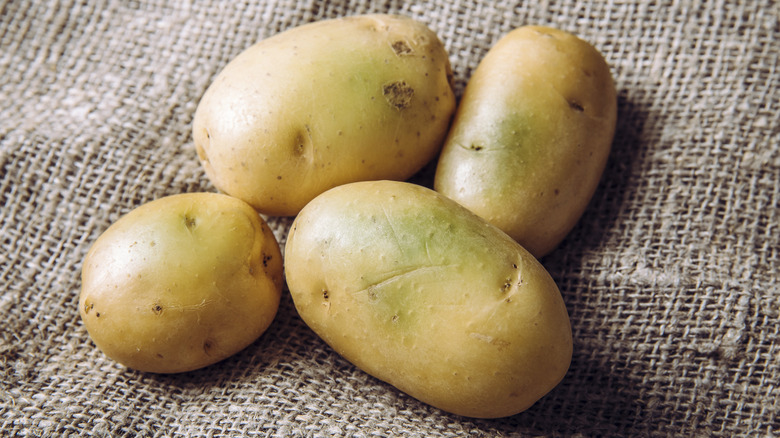The Science Behind Why You See Some Green Grains In Brown Rice
Rice comes in all sorts of lengths and colors. No matter the variety, none of them are typically green. So, if you ever open a bag of brown rice and notice some green grains, you might be tempted to throw out that uncooked rice. But before you toss the bag, you should know that a green grain is not one that has gone bad.
In fact, rice doesn't go bad easily, as long as it's stored in a dry, airtight container after opening, according to Think Rice. Proper storage will keep contaminants and pests at bay, and if kept dry and cool, white rice can live (almost) forever in your pantry. Brown rice, however, is a whole grain, so it still has its oil-rich bran layer. That oil oxidizes and can start to turn in as little as six months. Spoiled oil tastes awful and maybe even a bit fishy, but if it smells fine, it's probably still fresh. For longer shelf life, keep brown rice in the fridge or freezer.
So, if green grains of brown rice isn't a harbinger of spoiled rice. What else could it be?
There's no reason to fear green rice
A grain of brown rice that's turned green is no more dangerous to eat than the bright green rice your dinner bowls have been missing. In fact, the emerald hue in both of those is the result of the same scientific process, photosynthesis. The herbs that color a batch of "green rice" are chock full of chlorophyll, the part of green plants that convert energy from the sun into energy the plant uses to grow, and in the case of rice, create a grain that we eat, according to WebMD.
According to 12 Tomatoes, the questionable grains of brown rice still have a tinge of green from the same chlorophyll. It remains in under-ripe rice, just like in so many other foods, like tomatoes, bell peppers, strawberries, and bananas. Rice ripens from the top down. So, these green grains are most likely from the bottom of a sheaf of rice. Because the outer layers of whole grain rice are removed to yield white rice (per Healthline), these grains will rarely be anything but white.
What about green potato chips?
Speaking of noticing some unexpected green, what's the deal with the occasional green potato chip? Mental Floss explains that chlorophyll is, again, to blame. As potatoes are exposed to light, they can start to produce chlorophyll. As with brown rice, or any other food, chlorophyll is perfectly safe to eat.
But, in the case of potatoes, a poison called solanine is produced in the same environment as chlorophyll. Potato plants produce this toxin to protect them from insects and other predators. It will make us sick, usually with an upset stomach. But, you'd have to eat a lot of green potatoes before feeling the effects. Mental Floss notes that two pounds of very green potatoes would make an average-sized person start to feel sick.
Most green potatoes don't even make it to market, thanks to USDA grading. If they do end up in your kitchen, don't worry, just snag your vegetable peeler. Removing the peel, any green spots, and eyes will take care of the highest concentrations of solanine, per Healthline. Still worried? Solanine has a very bitter taste, so if your potatoes are bitter, you can throw them out.


